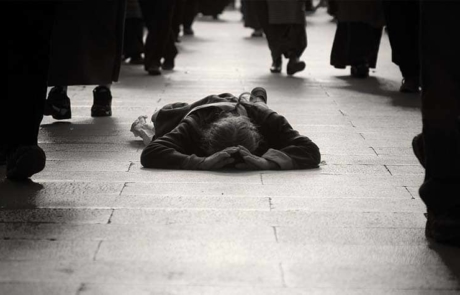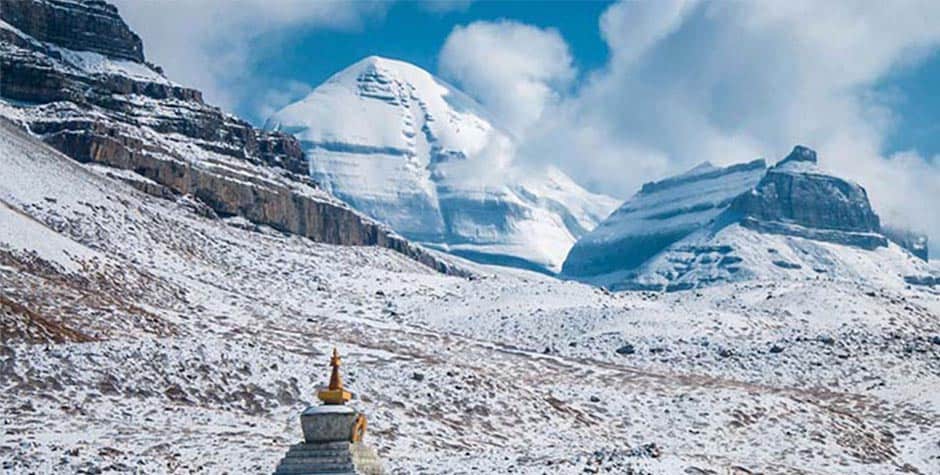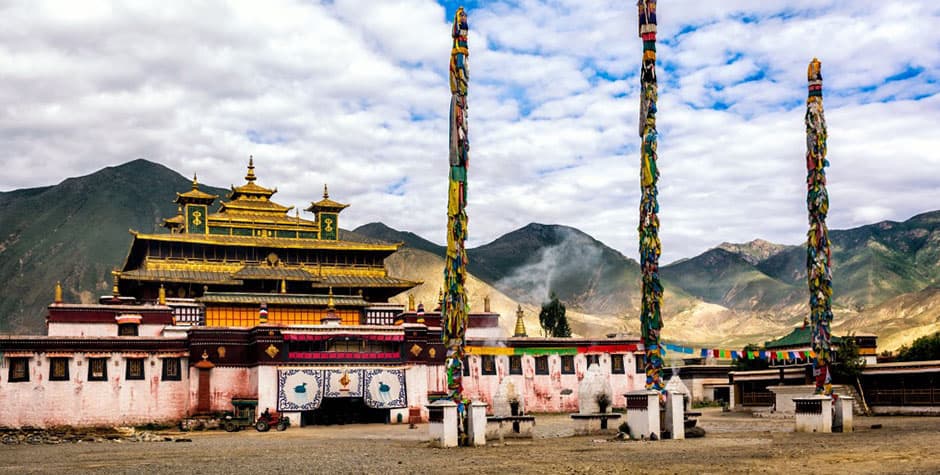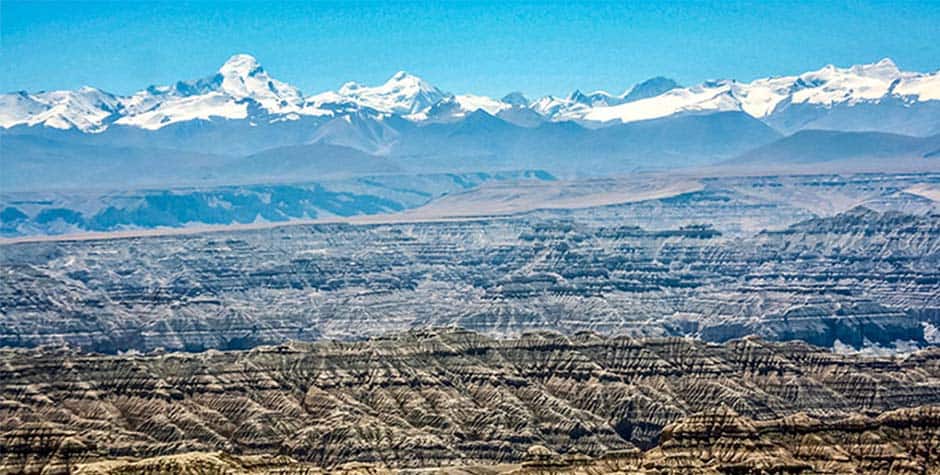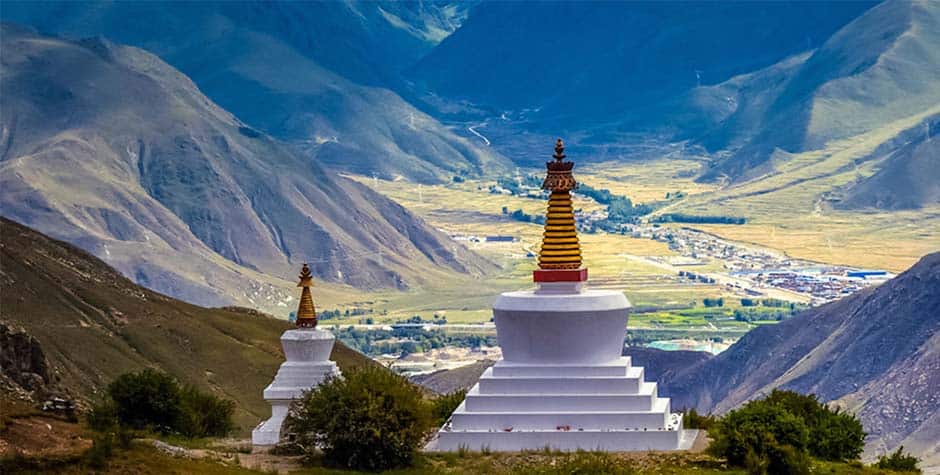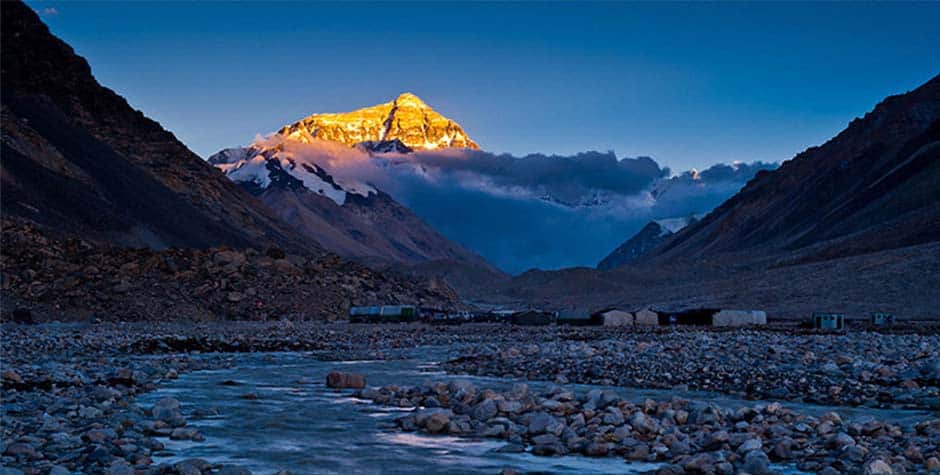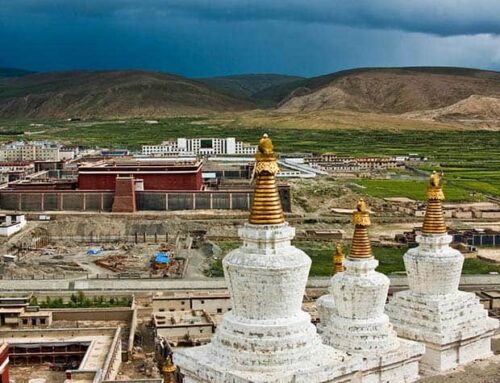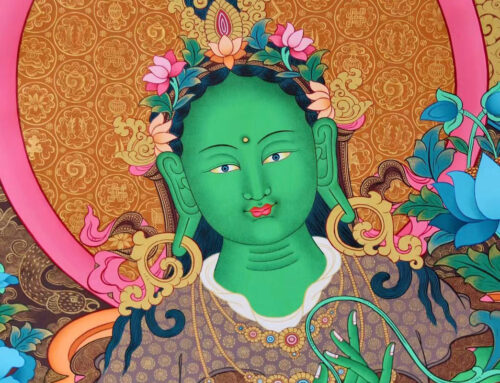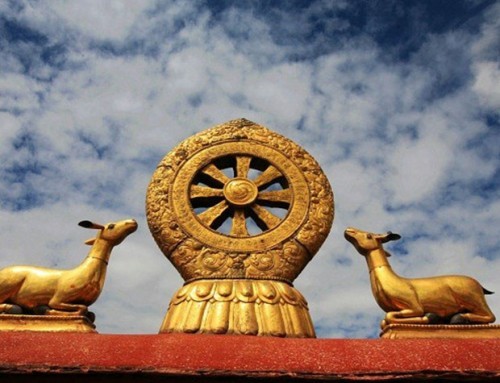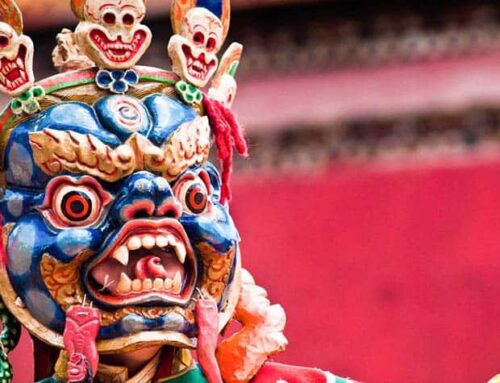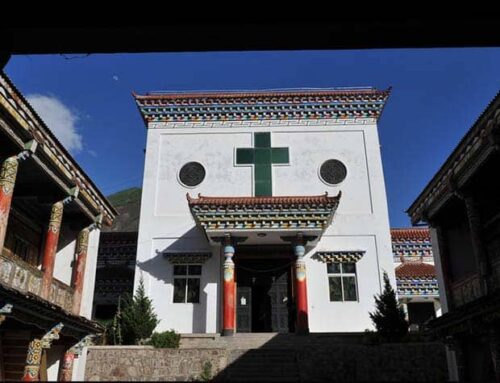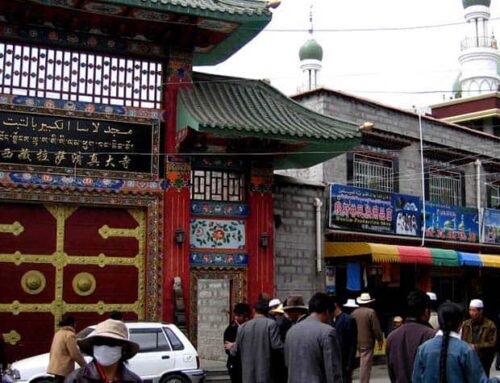Prostration: when you visit Tibet. You will see lots of people prostrating, either on the circumambulating path of Barkhor, in front of Jokhang temple or Potala Palace. Many visitors do have the idea about what we are doing but many do not know. This is why we thought we should write about the prostration and the reason we do it.
The first thing, we need to see the origin of prostration. The prostration is known as the Namas Kara. which means “I bow to the divine in you”. It is a gesture used to show reverence to the triple gem of Buddhism: the Buddha, Dharma(his teaching) and Sangha (the spiritual community).

According to the Buddha’s life story. He is said to have prostrate before his seat before he sat on the throne prior to his first sermon. After this, the custom of this prostration has continued till date. Buddha did it to suppress the ego, he might get after seating on the high seat. This is as far as our knowledge the first act of prostration in the history of Buddhism.
The word Namas-Kara means “I bow to inner Buddha nature in you”. The Buddha-nature means, “the wanting to be happy”. We all sentence beings want to be happy. Whatever we do, it is for happiness. This want is the first question towards the path of Buddha-hood and this is the first motivation wanting to achieve enlightenment.
The next question is, Are we on the right path? Do our actions lead us to real happiness? Most of the time, we are so much clinch to the temporary happiness which later becomes the source of suffering. So if we look closely with the nature of this Samsara. Samsara itself is a source of suffering. So the right path to go out of the samsara, which is pure happiness (Sachi Anand) is the path of Buddha.
In order to be on the path of Buddhism, one must take refuge to the three jewels of Buddhism. There are the Buddha(teacher), Dharma(his teaching) and Sangha( the community of devotees). This is the differentiating point between Buddhist and non-Buddhist. The motive behind this refuge is there is no real happiness in this Samsara. The real happiness is achieved at the stage of enlightenment. In order to achieve enlightenment, I am surrendering my body, mind, and soul to the three jewels of Buddhism.
The act of prostrating is an act of surrendering one’s body, mind, and soul to the three jewels of Buddhism. We prostrate before starting our day in the morning, and at the end of the day before sleeping, in front of the precious object of Dharma like the altar and temple, before doing any religious act.
While prostrating we recite mantras of choice. We do meditation while prostrating too. Reciting the mantra keeps our mind focus on the teaching of Buddha.
Prostration is also a great source of physical exercise. It helps improve the digestion system and balance of four elements in our body.
The benefits of Tibetan Buddhist prostration
when we prostrate, we seek to purify our delusions, negative karma. While prostrating we purify the bad karma and delusion and we generate positive merit.
Steps in prostration
Followings are steps in how to do a prostration?
- First step: is folding of hand. your thumb should be placed inside your hand while making Namas Kara gesture.
- Second step: would be, place the folded hand on your forehead. this gesture signifies the Body.
- Third step: We will place our fold hand near our mouth, this gesture signifies the speech
- Fourth step: We place our fold hand on the heart, this gesture signifies the soul.
- Fifth step: is the prostration. this gesture signifies the surrenders above three.
Types of prostration
There are two types of prostration and there are full body and half body prostration. The full-body prostration is known as Kyang-Chag and half body prostration is called Kum-Chag. While doing the full-body prostration, we reach out to the length of our body thus lay fully on the floor. While making half body prostration, we bow down on our knees and place our heads on the floor. The only difference is the space and time. When there is more space and more time we would do full body prostration and if there is less space and if we are in a hurry, then we would do only half body prostration. Besides the difference in reach out, all the others are the same in both types of prostration. We have more information about Tibetan religion in this archive. please follow us for more information about Buddhism and Tibet travel information. we do offer Tibet tour service for international travellers to Tibet.

Tenzin Travel is the best Tibetan Travel agency in Tibet. Our agency is one of Tibet’s most experienced tour operators, with over 20 years in the industry. Founded by a local Tibetan family with decades of expertise as guides, managers, and route planners. We craft personalized itineraries for every traveler. Our agency is the highest-rated and most recommended Tibet travel agency on TripAdvisor, Google, and Lonely Planet.
We can make holistic arrangements for your trip to Tibet. Including a Tibet Travel Permit, a Tibetan tour guide, flight tickets, train tickets, vehicle arrangements, and hotel bookings in Tibet.
Our Lhasa office is just steps from Barkhor Square. All our Tibetan team ensures deep cultural, linguistic, and religious insights, setting us apart from other agencies.
Beyond tourism, we support Tibetan communities by donating a portion of each tour to local projects. Your travel to Tibet is about more than profit—it’s about the opportunity for us to give back.

